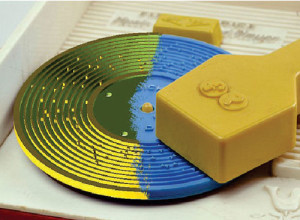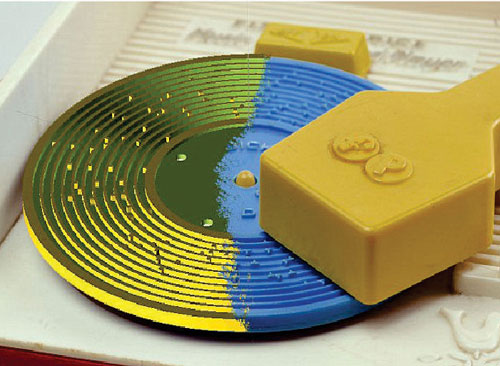The geometric design of roads is a branch of highway engineering. It is concerned with the positioning of the physical elements of a roadway, according to standards and constraints.
The basic objectives of geometric design are to optimize efficiency and safety of roadways, while minimizing cost and environmental damage. In addition, there is an emerging objective of “livability”, which is about designing roads to foster broader community goals such as providing access to employment, schools, businesses and residences, and accommodate a range of travel modes such as walking, bicycling, transit, and automobiles, and minimizing fuel use, emissions and environmental damage.
Geometric roadway design can be broken into three main parts:
The alignment is the route of the road, defined as a series of horizontal tangents and curves.
The profile is the vertical aspect of the road, including crest and sag curves, and the straight grade lines connecting them.
The cross section shows the position and number of vehicle and bicycle lanes and sidewalks, along with their cross slope or banking. Cross sections also show drainage features, pavement structure and other items outside the category of geometric design.
Basic design controls serve as the foundation for establishing the physical form, safety, and. functionality of the transportation facility. Some design controls are inherent characteristics of the facility (e.g., its physical context and the existing transportation demands, placed upon it).
Other basic design controls are selected or determined by the designer, working with communities and users to address a project’s purpose and need. Road having following element and their influence on the physical characteristics of a roadway or other transportation facility are:
Roadway Context: The context of a roadway is a critical factor to consider in developing a project’s purpose and need in making fundamental design decisions such as cross-section determination, and selecting detailed design elements such as street light fixtures or other construction materials. Development of a roadway design that is sensitive to, and respectful of the surrounding context, is important for project success.
Roadway Users: A fundamental expectation in roadway design is that all users will be accommodated safely. Early in the process, the designer needs to determine the composition of users anticipated for the facility.
The Cyclist: Safe, convenient and well-designed facilities are essential to encourage use of bicycle. Roads designed to accommodate cyclists with moderate skills will meet the needs of most riders.
Transportation Demand
Transportation demands – volume, composition, and patterns – are important design controls. The greater the demand for a facility, the more important are its operation and safety characteristics.
Design Year: Projects are designed to accommodate travel demands likely to occur within the life of the facility under reasonable maintenance. This involves projecting future conditions for a selected planning horizon year.
Volume and Composition of Demand: The composition of transportation demand is an important element in the design of roadways. The designer should develop a realistic design scenario including the volume and mix of activity for all modes as described below.
Pedestrian Demands: Pedestrian counts should be completed to determine pedestrian flows and patterns. The pedestrian counts should include sidewalk demands, crossing demands, and storage demands at corners, traffic islands, and median (total number of pedestrians waiting to cross the street).
Bicycle Demands: Bicycle demands should be counted during peak hour’s concurrent with vehicle turning movement counts. As the pedestrian activity, the designer should also evaluate the project area to determine if there is potential latent demand for bicycles accommodation.
Motor Vehicle Traffic Volumes: Daily, peak hour, and patterns of motor vehicle traffic are needed as input to the planning and design of roadway facilities. Some key definitions of traffic volume measures are listed here:
- Average Annual Daily Traffic (AADT): The total yearly volume of automobiles and trucks divided by the number of days in a year.
- Average Daily Traffic (ADT): The calculation of average traffic volumes in a time period greater than one day and less than one year.
- Peak-Hour Traffic (PH): The highest number of vehicles passing over a section of highway during 60 consecutive minutes.
- Peak-Hour Factor (PHF): A ratio of the total volume occurring during the peak hour to the maximum rate of flow during a given time period within the peak hour (typically is 15 minutes).
- Design Hourly Volume (DHV): The one-hour volume in the design year selected for determining the highway design.
Measure of Effectiveness
Through the project development process and with public input, the designer should evaluate the project using several measures evaluate the project using several measures discuss transportation or contextual of effectiveness.
National or state transportation policy places an emphasis on improving the condition of existing facilities. Projects on existing facilities should return a facility to state of good repair by addressing existing structural, pavement surface, or other deficiencies.
The safety of transportation facilities is a primary concern in planning and design. Some projects are specifically proposed to address known safety problems; however, all projects should result in a facility that safely accommodates its users.
Many projects result in improved accommodation for particular modes. The effectiveness of these projects can be measured by the degree to which they allow users to choose the mode best-suited to their trip purpose and personal values within the broader framework of the community, the region and the environment.
Slight Distance
Sight distance is the length of roadway ahead that is visible to the roadway user. In most cases, specific sight distance measures apply to motor vehicles and cyclists. The following aspects are commonly discussed for motor vehicle sight distance:
Motor Vehicle Stopping Sight Distance: Stopping sight distance is the distance necessary for a vehicle travelling at the design speed to stop before reaching a stationary object in its path. The sight distance at every point along a roadway should be at least the stopping sight distance.
Passing Sight Distance: For two-lane highways, passing manoeuvers in which faster vehicles move ahead of slower vehicle must be accomplished on lanes regularly used by opposing traffic. If passing is to be accomplished safely, passing sight distance is necessary to allow the passing driver to see a sufficient distance ahead.
Decision Sight Distance: Decision sight distance adds a dimension of time to stopping sight distance to allow a driver to detect and react to an unexpected condition along a roadway. Decision sight distance is suggested when there is evidence that it would be prudent to provide longer sight distance, such as when complex decisions are needed or when information is difficult to perceive.
Speed
Speed is an important factor considered by travellers in selecting a transportation mode or route. Speed can also influence the physical characteristics of the transportation infrastructure. Many design elements such as horizontal and vertical curvature and super elevation are directly related to speed. The objective in the planning and design of a roadway is to determine a speed that is appropriate for the context results in a safe facility for all users, is consistent with the community’s goals and objectives for the facility, and meets user’s expectations. Once an appropriate speed is selected, the designer needs to tailor design elements to that speed.
Conclusion
In geometric design of roads and highways, the basic design controls serve as the foundation for establishing the physical form, safety, and functionality of the transportation facility. Some design controls are inherent characteristics of the facility. Other basic design controls are selected or determined by the designer, working with communities and users to address a project’s purpose and need. Selecting appropriate values or characteristics for these basic design controls is essential to achieve, safe, efficient, cost effect, sustainable and context sensitive design.
Courtesy: www.en.wikipedia.org | www.nbmcw.com
Bentley MXROAD
Bentley MXROAD is an advanced, string-based modeling tool that enables the rapid and accurate design of all road types. With MXROAD, you can quickly create design alternatives to build the ideal road system. After a final design alternative is selected, you can automate much of the design detailing process, saving time and money.
MXROAD uses 3D string modeling technology-a powerful yet concise method of creating 3D surfaces. The interoperable database allows engineers to create and annotate 3D project models in the most popular AEC platforms or in Windows. This means that you can work on the project within one environment, save it, and open it seamlessly in another environment with no loss of data. This promotes maximum productivity of trained staff. CADD Centre’s 64 hour course on MXROAD is designed to provide a solid foundation in the use of the interactive functions in MXROAD. This will enable engineers or technicians to operate the system confidently through a good understanding of the principles of surface modeling and the design functions of MXROAD.
 In this case, 3D printing technology has been applied to restoration. Researchers from the Lawrence Berkeley National Laboratory (LBL) have used 3D scanning technology to restore some century-old recordings made by three notable inventors that include Charles Sumner Tainter (inventor of an early telephone transmitter), Alexander Graham Bell, and his cousin Chichester Bell. These three inventors collaborated to bring about what was considered high-fidelity for audio systems (notably their graphophone) back in the 1880s. The team experimented using various mediums for their recordings that included discs and cylinders made from beeswax and cardboard, brass, and glass. Finally, they succeeded in making a series of recordings (more than 200 of them) on glass-based discs, which were sent to the Smithsonian in an effort to preserve them. However, they never sent the playback device needed to listen to the discs which were then considered useless and left to decay.
In this case, 3D printing technology has been applied to restoration. Researchers from the Lawrence Berkeley National Laboratory (LBL) have used 3D scanning technology to restore some century-old recordings made by three notable inventors that include Charles Sumner Tainter (inventor of an early telephone transmitter), Alexander Graham Bell, and his cousin Chichester Bell. These three inventors collaborated to bring about what was considered high-fidelity for audio systems (notably their graphophone) back in the 1880s. The team experimented using various mediums for their recordings that included discs and cylinders made from beeswax and cardboard, brass, and glass. Finally, they succeeded in making a series of recordings (more than 200 of them) on glass-based discs, which were sent to the Smithsonian in an effort to preserve them. However, they never sent the playback device needed to listen to the discs which were then considered useless and left to decay.